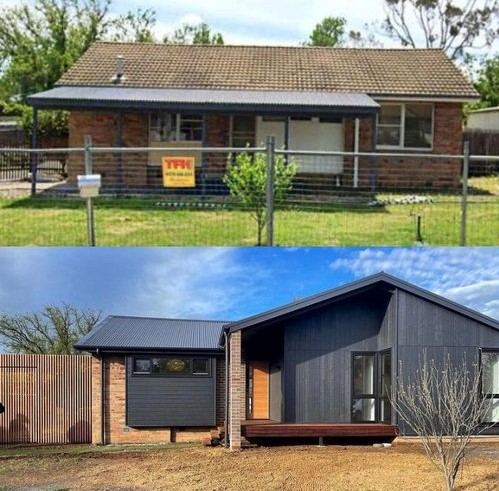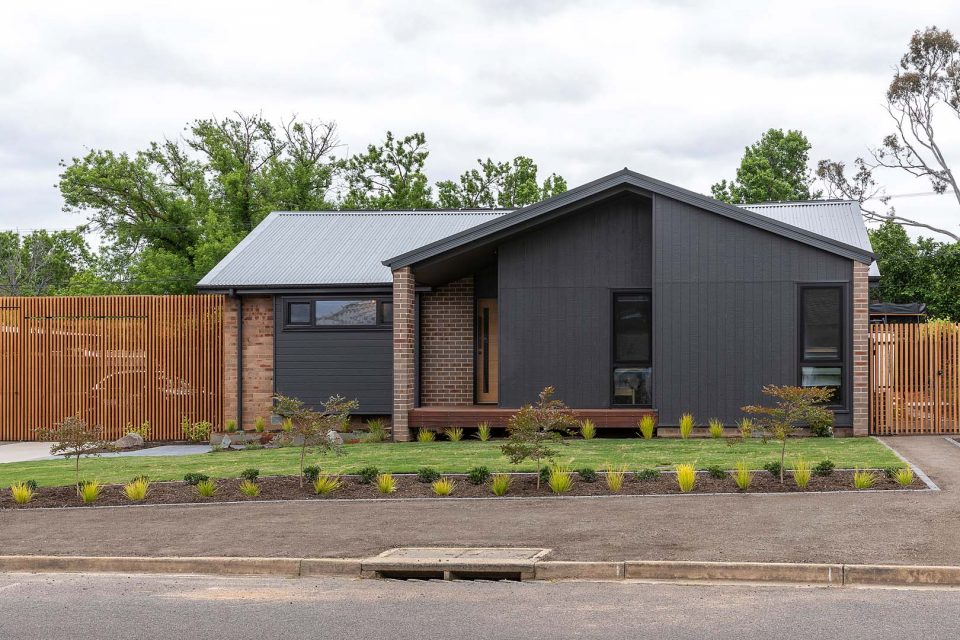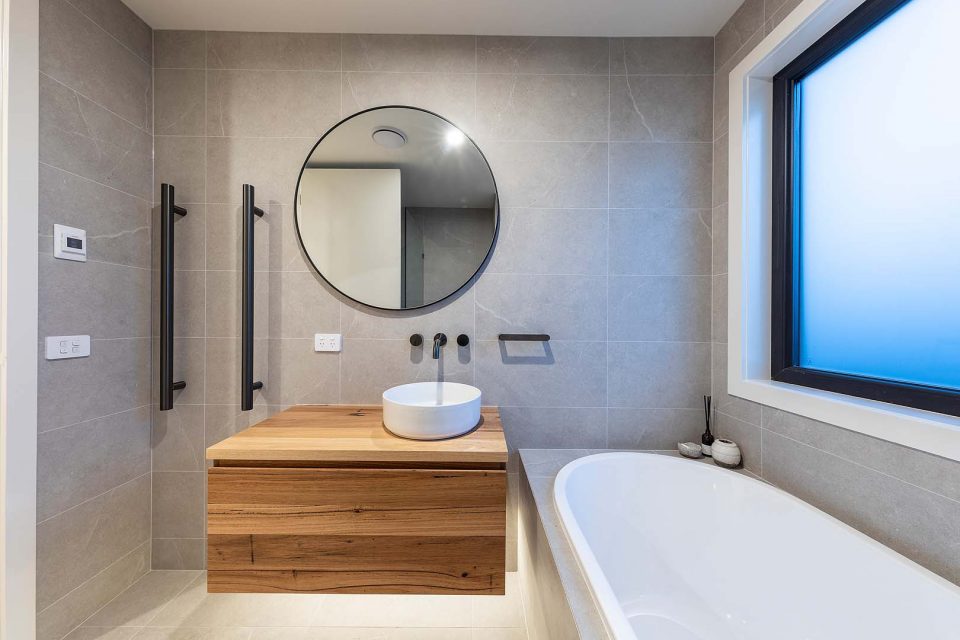
Before and after: From Watson govie to sustainable comfort. Photos: Light House Architecture and Science.
An ex-govie in Watson that was otherwise a candidate for knockdown has been resurrected with a sustainable renovation that has taken out a national award.
Light House Architecture and Science and Edward Robert Builders have won best GreenSmart Renovation/Addition Project at the 2022 Housing Industry Association (HIA) Australian GreenSmart Awards announced in Canberra.
Blackburn House went from a lowly three star energy rating to nearly eight stars and now uses more than 80 per cent less energy than the average Canberra home and generates much more energy than it uses, courtesy of rooftop solar.
Using solar passive principles and thermal performance modelling, the energy efficiency score was raised from three stars to a 7.7-star NatHERS rating to become a comfortable, energy-efficient family home that is now all-electric with a 10.4kWh PV system, battery and electric vehicle charger.
The win adds to a swag of awards Light House Architecture and Science have collected over the years.
Owner and Managing Director Jenny Edwards said the renovation showed there was more potential in Canberra’s existing housing stock than most people realise and what could be achieved with a rebuild rather than a complete knockdown.
Ms Edwards said the classic, daggy 1960s ex-govie had been badly extended and wasn’t making the most of its reasonably good orientation.
“It was north, sort of on an angle to the rear so we could see that it had big potential and our clients could too,” she said.
“They said we want to be able to do these functions in this way with our family, and we could see that there was potential with a really small extension to completely rejig the house and improve its thermal performance.”
The living areas were moved to the rear to take advantage of the winter sun, and ceiling, wall and sub-floor insulation along with double glazing were installed.
“Those things alone can do a hell of a lot in our climate, but if you combine it with the solar passive design, getting that free heat in winter, making sure you shade it in summer, that’s when you can really lift that star rating,” Ms Edwards said.








A key factor was ensuring the house was sealed tight to prevent leakage and draughts.
Ms Edwards said this was done with standard construction methods, not the more exacting – and more expensive – Passive House standards, or using internal air barrier membranes or services cavities.
“Just really good attention to detail so we make sure every junction in the house is well sealed and we don’t put lots of excessive penetrations in the building envelope such as lots of downlights,” she said.
The builders were also able to re-use the floor, wall and roof framing. New materials were chosen for their longevity, durability, naturality and/or low embodied energy, to allow for a lighter footprint over a longer lifetime.
This included Weathertex timber cladding made from 100 per cent natural products from PEFC certified state forest or private hardwoods from controlled sources.
All external cladding and roofing materials (bricks, Weathertex and Colorbond steel), could be recycled if the house was ever demolished.
A 5000L rainwater tank is plumbed to the laundry, toilets and gardens, while water-efficient dual flush toilets and kitchen and basin mixers were installed.
Ms Edwards said that in the context of the overall renovation, the work to lift the home’s thermal performance and make it so much more energy efficient did not cost the earth.
“There are thousands of major renovations that happen in this country every year where people are focused on their stone benchtops and making everything look beautiful,” she said.
“They forget to do those boring things in the walls, the insulation and things, so it’s not difficult and it’s not expensive to do either.”
Ms Edwards said Light House also worked with low-income households and for budgets of between $5000 and $15,000 houses could be turned around.
Owner Richard Ings said the family was now saving $3000 a year on energy bills, and when the EV is factored in it amounts to $8000 a year.
Mr Ings said that before the renovation, bills, including gas, were about $1000 a quarter and the family would still be freezing in winter, so cold that his daughter got pneumonia.
“So it was brutal and expensive,” he said.
The family have been in the new home for 12 months and in that time the total energy bill was $750, mainly for charging the EV.
“That $750 includes charging the car and driving it 20,000 kilometres a year,” he said.
“So when you look at the net saving of going electric we had four and a half grand in diesel and we had three and a half grand in gas and electricity – eight grand that we’re spending a year on energy to commute. It now costs us $750 to drive the same distance and live in a much nicer, warmer house.”
Mr Ings said lifting the energy rating to this level added about 10 to 15 per cent to the cost of a renovation and, with the range of government loans and incentives on offer, it was a no brainer.
He also said that while the home is compact at 145sqm, Light House and Science’s smart design meant it felt much more spacious than that, leaving more room outside on the 770sqm block for the children to play.














